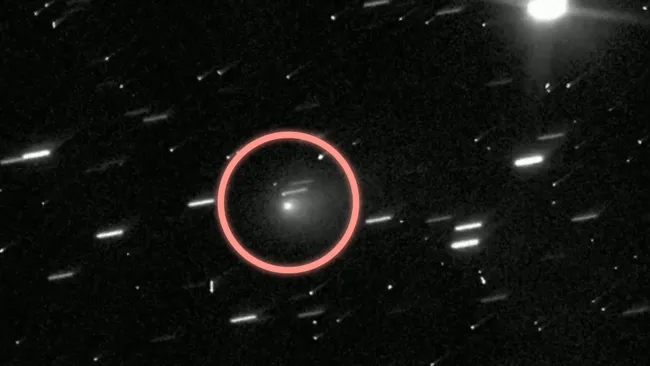
Key Takeaways
- NASA’s Neil Gehrels Swift Observatory detects powerful water jets erupting from 3I/ATLAS—its activity compared to a “fire hose running at full blast.”
- Elon Musk, whose Starlink satellites continue falling back to Earth, has yet to say a word about 3I/ATLAS or orbital risk preparedness.
- The insurance industry still lacks models for space debris, despite a 61% annual ground-casualty probability projected by 2035.
By Samuel Lopez | USA Herald
USA HERALD – The interstellar object 3I/ATLAS has just revealed something extraordinary—and troubling. According to a new study using NASA’s Neil Gehrels Swift Observatory, scientists have, for the first time, detected the chemical fingerprint of water spewing from the comet “like a fire hose running at full blast.”
The finding confirms that 3I/ATLAS is not only active—but chemically alive with the same ingredients essential for life’s chemistry. As one NASA researcher described it, “It tells us that the ingredients for life’s chemistry are not unique to our own.”
But while astronomers celebrate a scientific milestone, the silence from NASA’s leadership and Elon Musk grows louder, and the insurance industry continues to underestimate the risks orbiting above—and falling toward—Earth.
Nowhere is this negligence more personified than in the Starlink satellites that plummet to Earth daily, burning up in the atmosphere for now, but with each satellite carring a five-year expiration date by design, this could be an issue worth keeping eyes on.
For Elon Musk, a man who dreams of colonizing Mars, his lack of interest in 3I/ATLAS—an object that just passed the red planet—is baffling. Instead of offering insights, he’s tweeting about terrestrial immigration policy. His silence is a betrayal of the public trust and an abdication of responsibility.
The question must be asked: Why hasn’t the billionaire who put a Tesla Roadster into orbit for a publicity stunt invested in a transparent, public-facing space-tracking and warning system? He has the technology and the resources, but apparently not the will. His silence is illuminating. When a Starlink satellite, or a larger piece of debris it collides with, inevitably survives reentry and strikes a home, school, or hospital, who will be held liable?
While scientists marvel at water in deep space, insurers remain stuck in denial here on Earth. A 2023 FAA study projected a 61% annual chance of ground casualties from falling satellite debris by 2035, yet, today’s West Texas incident, where a NASA research payload crash-landed in a wheat field, highlights that gap in real-world terms. No one was hurt—but what if they had been? Who pays when falling equipment, satellite panels, or fragments from reentry strike private property?


